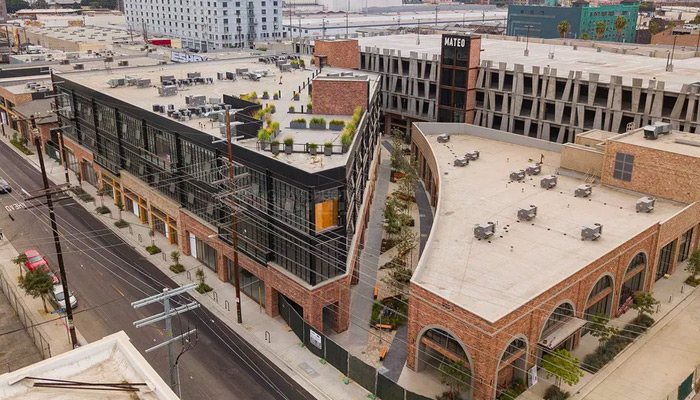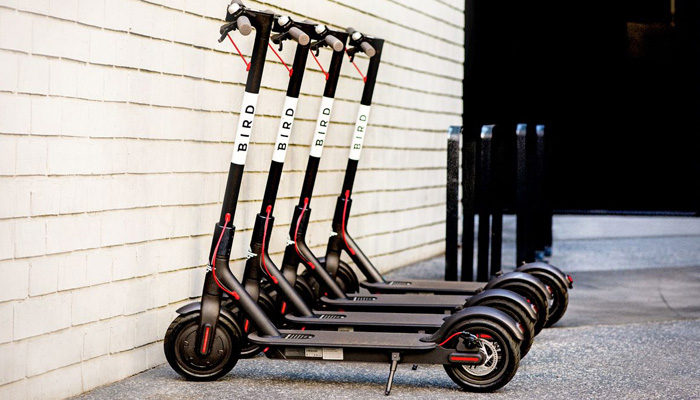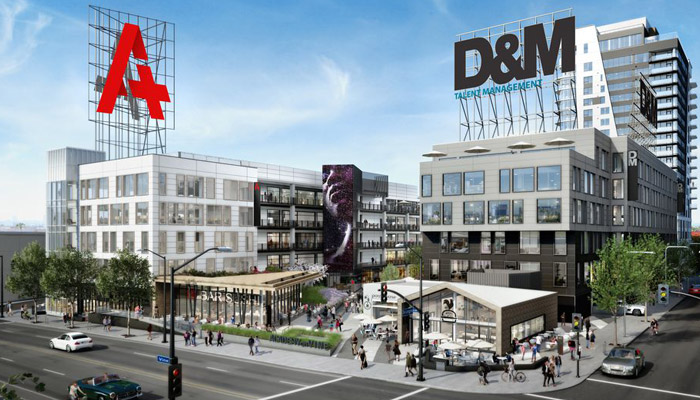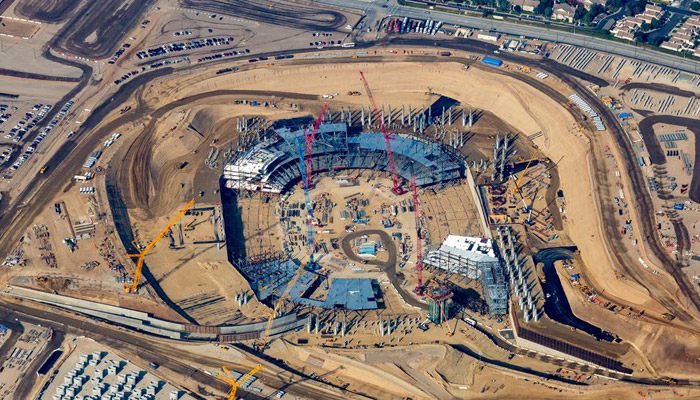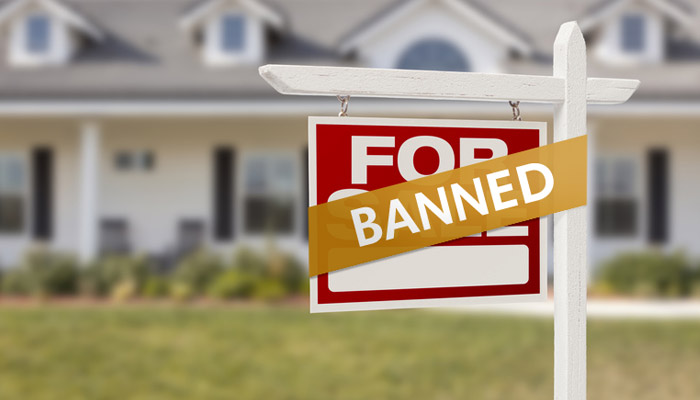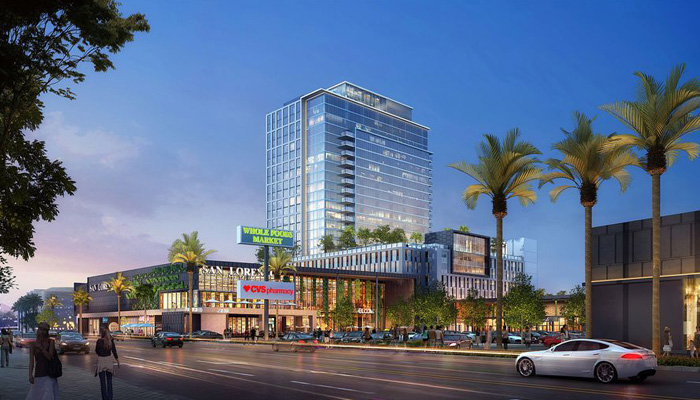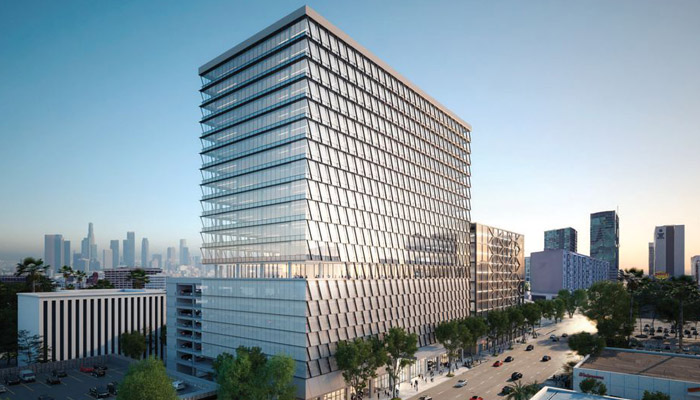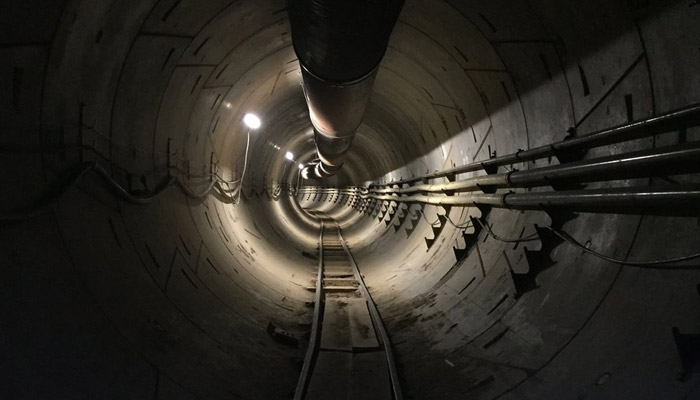Warner Brothers pitches LA on an aerial tram to the Hollywood Sign
One of entertainment industry’s largest and most recognizable movie studios wants to get into the transportation business.
Warner Brothers announced plans Tuesday for an aerial tram that would ferry visitors to and from the Hollywood Sign. The company would pay for the tram’s construction and would operate it from a parking lot just south of its Burbank backlot.
In a letter sent Monday to Los Angeles parks and legislative officials, the studio ...
Spotify will open regional headquarters in the Arts District
Music streaming service Spotify will open a new regional headquarters in Los Angeles’s Arts District.
Representatives of the recently opened At Mateo office and retail complex announced Monday that the Swedish tech company had signed on to lease approximately 110,000 square feet of office space at the site.
The arrival of Spotify marks another big step in the Arts District’s transformation from a trendy area popular with artists and gallery ...
LA moves forward with regulations for dockless bikes and scooters
The Los Angeles City Council is crafting new rules to regulate dockless bikes and electric scooters, and the policy will likely limit how many vehicles companies can disperse on city streets and sidewalks.
The bikes and scooters, which can be rented through a smartphone app and left on the curb once a ride is finished, have become a common sight on the Westside. More recently, they’ve begun popping up in more central neighborhoods as well, like ...
Hollywood’s Academy on Vine mixed-use development with 20-story breaks ground
Hollywood’s ever-changing landscape is due for another major new addition. Kilroy Realty has begun work to build Academy on Vine, its $450 million mixed-use development, the Los Angeles Times reports.
The development will rise on a full city block bounded by De Longpre, Homewood, Ivar, and Vine, directly south of the ArcLight Hollywood parking garage.
Made up of four mid-rise commercial buildings and one 20-story residential tower, the completed ...
Inglewood residents sue to block Clippers arena
Trying to halt plans for a new Clippers arena on public land, a group of residents filed a civil lawsuit against the city of Inglewood on Tuesday.
The lawsuit seeks to make the land available for affordable housing, rather than the NBA team. The Clippers want to build a new home court on the city-owned site, which is located directly across the street from an under-construction NFL stadium and a massive new mixed-use community at Hollywood Park.
“Our ...
No More ‘For Sale’ Signs On Homes In This Connecticut Town
NEW CANAAN, Conn. (CBS New York) – ‘For Sale’ signs will soon be a thing of the past on homes in New Canaan, Connecticut.
A six-month trial ban starts July 1, meaning those signs you see in front of houses will have to be taken down.
The New Canaan Board of Realtors voted in favor of the ban, saying prospective home buyers aren’t driving around town anymore. Instead, they’re researching online.
“Most people recognize they’re ...
Here’s a peek at planned Third/Fairfax mixed-user and its 26-story tower
We’re getting a clearer picture of project that could dramatically alter the southeast corner of Third and Fairfax, thanks to details and visuals from the Mid-City West Neighborhood Council’s planning and land use committee.
As proposed, the MVE and Partners-designed project would include 380 residential units and a 26-story tower, and it would rehabilitate some of the retail on the site now while adding more. The project would replace the low-rise ...
Construction set to begin on 21-story tower in county’s big Vermont Corridor project
A plan from the county of Los Angeles to replace and rehab a handful of government offices near Vermont and Sixth streets in Koreatown is moving full steam ahead, with work on one of the new towers expected to begin as soon as this summer.
The Board of Supervisors’ on Tuesday certified the project’s final environmental impact report and approved a wave of funding.
The planned development—hailed as a “victory” for Koreatown—will include ...
LA housing prices break another record
It’s been a tough spring for Los Angeles homebuyers. With fewer than usual houses on the market to choose from, prices bested an all-time record in April, according to a new report from real estate tracker CoreLogic.
That makes three months in a row in which the region’s price record has been broken, and homes are now selling for well above prices seen in the buildup to the 2007 mortgage crisis. In April, the median price was $590,000—close ...
Elon Musk says his LA tunnel will open to the public ‘in a few months’
Elon Musk posted a short video to Instagram on Thursday night showing off an “almost” completed tunnel constructed by his Boring Company.
In the caption, Musk makes a bold prediction. He claims the tunnel for transit, which he has described as an antidote for LA’s gridlocked streets, will be open to the public soon.
“Pending final regulatory approvals, we will be offering free rides to the public in a few months,” he writes.
Musk has ...

